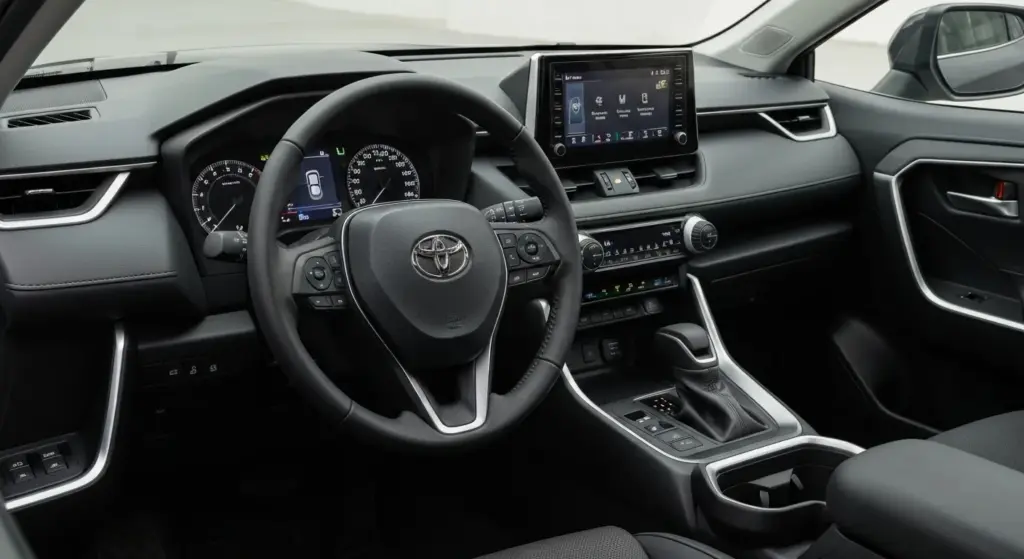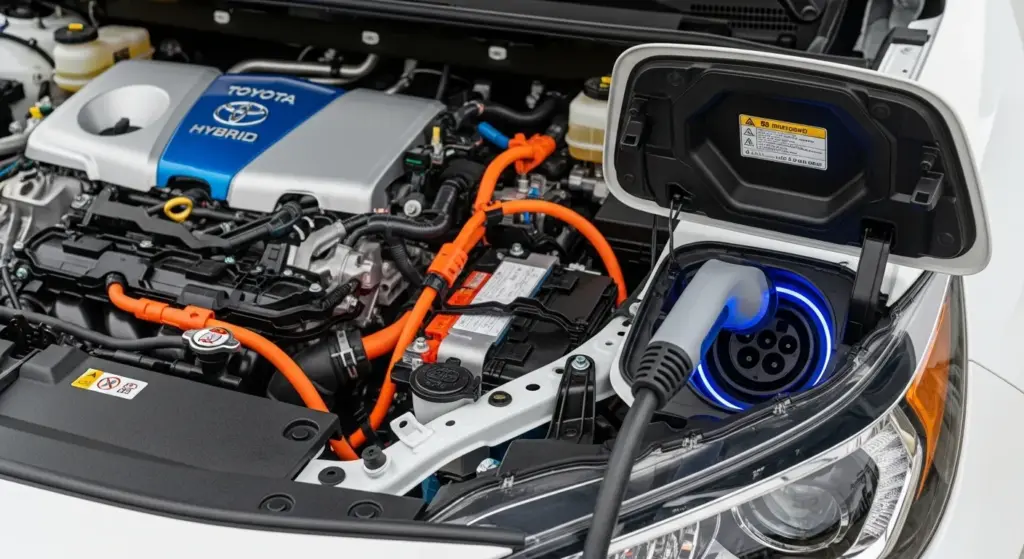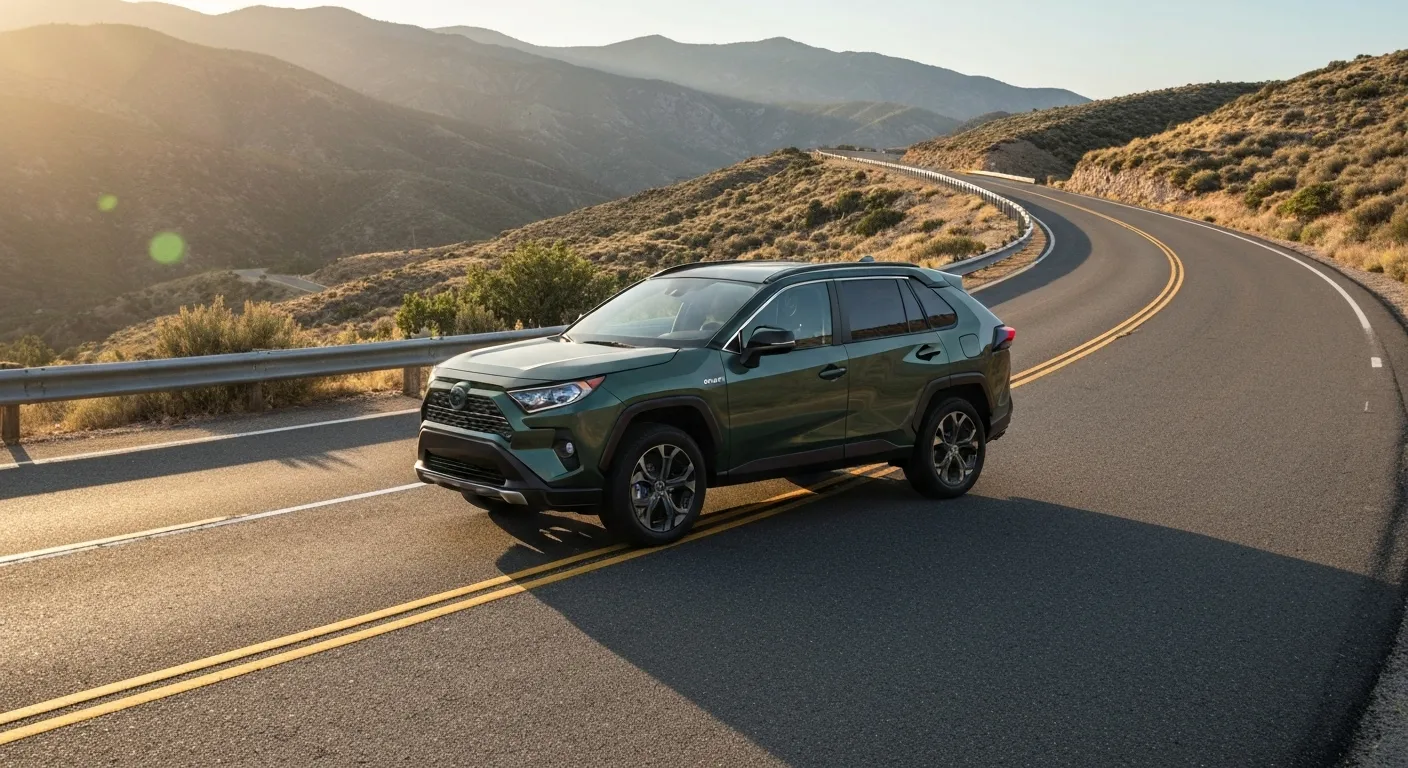Gas prices, tightening emissions policy, and consumer demand for electrified options mean that automakers must move aggressively. For U.S. buyers in 2025, the shift toward hybrid and plug-in models is no longer optional — it’s expected. The 2026 Toyota RAV4 arrives right at this pivot point, offering a fully electrified lineup (hybrid + plug-in hybrid) and the kind of tech that positions it as more than just a safe choice — it wants to be exciting too.
For compact SUV buyers — arguably among the most competitive and volume-rich segments — this launch is a statement. The RAV4 has long been a benchmark in everyday versatility. With this generation, Toyota is trying to capture both utility and electrified performance, making it a vehicle that could appeal to families, commuters, and eco-conscious road warriors alike.
Electrified Powertrains: HEV vs. PHEV and Real-World Impact
Toyota has made a bold decision: the 2026 RAV4 abandons any pure gas engine options and goes with hybrid (HEV) and plug-in hybrid (PHEV) only.
Please take a look at this post as well: 2026 Toyota RAV4 Goes Fully Electrified — Hybrid Power, Fast Charging, and a Bold New Look
- In hybrid mode, the lineup supports front-wheel drive (FWD) or all-wheel drive (AWD) — a first for RAV4, as earlier hybrids were typically AWD only.
- Hybrid FWD delivers ~226 hp; the AWD hybrid bumps that ~236 hp.
- The PHEV version (plug-in hybrid) makes a stronger punch: ~320 horsepower combined output.
- Toyota claims an all-electric range of ~50 miles (EPA equivalent), a gain from prior RAV4 plug-in models (around 42 miles).
- Crucially, the new PHEV supports DC fast charging (CCS-compatible) on select trims, allowing 10% to 80% charge in ~30 minutes.
- Also upgraded is the onboard AC charger (up to 11 kW) — a faster “regular” charging rate than before.

Here’s a breakdown of key specs:
| Spec / Feature | Hybrid (HEV) | Plug-In Hybrid (PHEV) |
|---|---|---|
| Drive options | FWD or AWD | AWD (standard) |
| Combined Horsepower | ~226 hp (FWD), ~236 hp (AWD) | ~320 hp |
| All-electric range | N/A | ~50 miles |
| Fast-charge support | — | Select trims (10–80 % in ~30 min) |
| AC Onboard charger | — | Up to 11 kW |
| Towing capacity | ~1,750 lb (some trims) | ~3,500 lb (higher trims) |
Real-world impact:
On your daily commute of 30–40 miles, many drivers in urban or suburban areas could do largely gas-free runs using the PHEV mode. Long highway trips will still depend on the hybrid backup, but with 320 hp, the RAV4 PHEV won’t feel underpowered.
The fast-charging capability brings it closer to EV-level convenience on longer routes. And for the HEV versions, offering FWD means better efficiency for drivers who don’t require AWD — tricking out a trim with AWD is an option for tougher weather or light off-road use.
Design, Trim Strategy & Software Overhaul

The sixth generation RAV4 gets a fresh aesthetic with sharper lines, a bold grille design, and new overfenders. The body dimensions remain quite close to the outgoing generation, but Toyota has reinforced critical chassis joints, improved NVH (noise/vibration), and enhanced rigidity.
Toyota is organizing styling into three broad themes: Core, Rugged (Woodland), and Sport.
- The Woodland trim is the “adventure-inspired” variant — higher ground clearance, all-terrain tires, rugged exterior cues, and standard AWD.
- The Sport side includes SE, XSE, and the GR Sport (PHEV-only) version. GR Sport gets suspension tuning from Toyota Gazoo Racing, sportier aesthetics, and more aggressive handling.
One of the standout updates is Toyota’s Arene software platform, which powers the new infotainment, instrument cluster, voice agent, and supports OTA (over-the-air) updates. This is Toyota’s push toward “software-defined vehicle” capabilities.
Please take a look at this post as well: Ram 1500 Brings Back the Hemi 2026— and It’s Already Breaking Sales Records
New tech highlights include:
- Larger, high-resolution touchscreens (10.5″ standard; up to ~12.9″ in upper trims)
- A reconfigurable 12.3″ digital gauge cluster in all models
- Wireless Apple CarPlay / Android Auto
- Some integration of climate controls into the touchscreen (a point of criticism among early observers)
- Enhanced driver-assist suite: Toyota Safety Sense 4.0 adds features like intersection collision mitigation, lane-change assist, predictive curve control, and more.
In essence, the 2026 RAV4 isn’t just a powertrain shift — it’s a software and usability leap.
Rivals, Legacy & Market Positioning
In the compact SUV space, the RAV4 faces stiff competition: Honda CR-V, Kia Sportage, Hyundai Tucson, Nissan Rogue, and others. What sets the 2026 RAV4 apart is its commitment to electrification across the entire range — something many rivals offer only in select trims.
Compared to the outgoing generation, Toyota’s decision to drop non-hybrid versions is bold. The prior RAV4 had conventional gasoline variants; now Toyota is betting that hybrid + PHEV will cover demand.
As for electric vehicle makers (Tesla, Rivian, etc.), this RAV4 isn’t a full EV, but it blurs the line: with fast-charging PHEV, it can act like an EV for many use cases. That could draw buyers who hesitate at fully electric options but want much of the benefit.
From a legacy/fleet perspective, RAV4 is Toyota’s volume workhorse. Shifting it fully electrified sends a market signal: Toyota is serious about hybrid-first strategy, and this is their flagship electrified compact SUV push.
Please take a look at this post as well: This 2026 Mercedes CLA Might End the EV vs Gas Debate Once and for Al
Fresh News & Developments (2025–2026)
- Toyota revealed the new RAV4 in May 2025, confirming the move to HEV + PHEV only.
- The Arene software platform was announced in May 2025 alongside the RAV4 unveiling.
- Reuters reports suggest the new RAV4 may reach battery-only range of 93 miles (150 km) in some markets (though U.S. EPA is ~50 miles).
- Toyota is reportedly considering shifting some RAV4 production to the U.S. (Kentucky) to avoid tariffs and supply-chain risk.
- The Verge confirmed that the 2026 RAV4 PHEV supports DC fast charging, making it more practical for long-distance use.
- Media outlets note that many trims integrate previously separate controls (e.g. climate) into the touchscreen, a point of user adjustment and debate.
These updates help the RAV4 appear more future-proof. The production shift possibility also signals Toyota’s responsiveness to U.S. regulatory / tariff pressures.
Who Should Buy It — Pros, Trade-offs & Verdict
Pros / Strengths
- A full electrified lineup ensures buyers have no compromise: you can still get AWD or EV-like daily driving
- Strong PHEV output (320 hp) means performance is real, not token
- DC fast charging support is a rare feature in plug-in SUVs
- Tech and software upgrades bring the cabin into the modern era
- Trim variety (Core / Woodland / Sport) caters to both performance and adventure buyers
Trade-offs / Areas to Watch
- Some climate controls moved into touchscreen — might be less intuitive in some driving scenarios
- Not a full EV, so for long EV-only trips gas backup is still relevant
- Only select trims support DC fast charging — you’ll want to confirm that when choosing
- Pricing is not yet finalized, and early adopters may face markups or limited availability
Who should buy now?
- Commuters in the U.S. with daily drives under ~40 miles — the PHEV may cover most travel in electric mode
- Those who want the “best of both worlds” — electric-leaning design without range anxiety
- Adventure seekers who want AWD, off-road styling (Woodland), and capability
- Tech-savvy buyers who value over-the-air updates, modern UIs, and advanced safety
If you mostly take highway or long-distance journeys, waiting for full-EV options might still make sense — but for many Americans today, the 2026 RAV4 offers a compelling and realistic balance.
